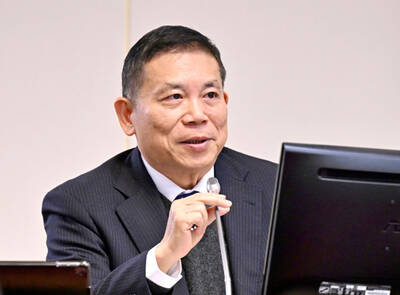Higher commodity prices and rising labor costs could bring an end to the recent improvement in operating margins and credit difficulties for the nation’s non-tech firms, Taiwan Ratings Corp (中華信評), a local unit of Standard & Poor’s Ratings Services, said yesterday in a report.
“Most non-tech firms that we rate in Taiwan slightly improved their adequate credit metrics over the past two quarters through deleveraging and capital expenditure cuts,” credit analyst Raymond Hsu (許智清) said in the report.
Taiwan Ratings said rising consumer demand, particularly from China, would continue providing support to Taiwanese chemical, building material and air and maritime transport firms’ operating performance in the next two quarters.
In addition, as worldwide consumer interest in tablet computers and smartphones continues to grow, Taiwanese firms that offer data and other telecommunication services will also see market demand increase significantly in the second half of the year.
“Nonetheless, profitability pressure from high and still-rising commodity prices have constrained non-tech firms’ credit profiles in recent quarters, which we expect to continue throughout 2011,” Hsu said in the report.
The report also said rising production and labor costs could undercut the profitability of non-tech companies and further impact the sector’s credit quality in the following two quarters.

Taiwan will prioritize the development of silicon photonics by taking advantage of its strength in the semiconductor industry to build another shield to protect the local economy, National Development Council (NDC) Minister Paul Liu (劉鏡清) said yesterday. Speaking at a meeting of the legislature’s Economics Committee, Liu said Taiwan already has the artificial intelligence (AI) industry as a shield, after the semiconductor industry, to safeguard the country, and is looking at new unique fields to build more economic shields. While Taiwan will further strengthen its existing shields, over the longer term, the country is determined to focus on such potential segments as

UNCERTAINTY: Innolux activated a stringent supply chain management mechanism, as it did during the COVID-19 pandemic, to ensure optimal inventory levels for customers Flat-panel display makers AUO Corp (友達) and Innolux Corp (群創) yesterday said that about 12 to 20 percent of their display business is at risk of potential US tariffs and that they would relocate production or shipment destinations to mitigate the levies’ effects. US tariffs would have a direct impact of US$200 million on AUO’s revenue, company chairman Paul Peng (彭雙浪) told reporters on the sidelines of the Touch Taiwan trade show in Taipei yesterday. That would make up about 12 percent of the company’s overall revenue. To cope with the tariff uncertainty, AUO plans to allocate its production to manufacturing facilities in

COLLABORATION: Given Taiwan’s key position in global supply chains, the US firm is discussing strategies with local partners and clients to deal with global uncertainties Advanced Micro Devices Inc (AMD) yesterday said it is meeting with local ecosystem partners, including Taiwan Semiconductor Manufacturing Co (TSMC, 台積電), to discuss strategies, including long-term manufacturing, to navigate uncertainties such as US tariffs, as Taiwan occupies an important position in global supply chains. AMD chief executive officer Lisa Su (蘇姿丰) told reporters that Taiwan is an important part of the chip designer’s ecosystem and she is discussing with partners and customers in Taiwan to forge strong collaborations on different areas during this critical period. AMD has just become the first artificial-intelligence (AI) server chip customer of TSMC to utilize its advanced

Chizuko Kimura has become the first female sushi chef in the world to win a Michelin star, fulfilling a promise she made to her dying husband to continue his legacy. The 54-year-old Japanese chef regained the Michelin star her late husband, Shunei Kimura, won three years ago for their Sushi Shunei restaurant in Paris. For Shunei Kimura, the star was a dream come true. However, the joy was short-lived. He died from cancer just three months later in June 2022. He was 65. The following year, the restaurant in the heart of Montmartre lost its star rating. Chizuko Kimura insisted that the new star is still down